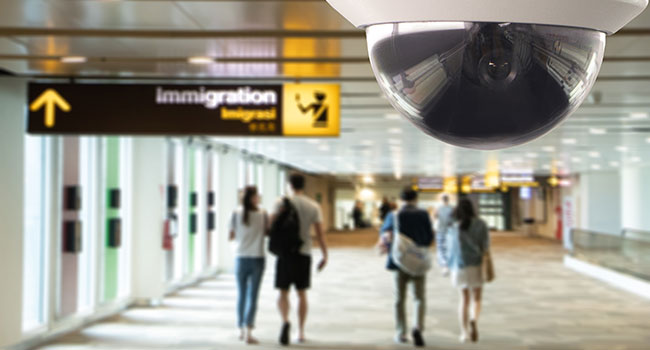
Taking Flight
- By Cameron Javdani
- Mar 22, 2023
Airport security is a complex system that incorporates multiple technologies to ensure the safety and security of travelers, employees and the facility itself. Sound-based technologies are integral pieces of this system, providing means of communication, notification and monitoring.
These uses help to enable airport security personnel to maintain an orderly environment, protect against threats such as theft, harassment, or assault, and to provide immediate instructions to evacuate or shelter in place in the event of a natural disaster or other emergency.
Specialized Systems
Security design is nuanced and specialized for an airport of any given size or location. Airport security systems will broadly ensure compliance with safety and security regulations, protect against crime or public safety threats, provide response capabilities in the event of a natural disaster and can improve passengers’ travel experience.
Most commonly, airports will use sound at security checkpoints, immigration and customs facilities, and along key perimeter locations. Technologies such as speakers or intercoms are used throughout terminals and access points to provide security announcements or notifications.
First, consider the use of sound at security checkpoints. Audio can be used in several ways to improve passenger safety and screening efficiency. Prior to arriving at the checkpoint, travelers are accustomed to hearing instructions on restricted items, items that need to be removed from bags, or screening policies that may have changed since the last time they traveled.
For their own operations, screeners may use audio as a tool to verify proper procedures and protocols are in place as they interact with passengers. Recordings used in conjunction with video of a security event assist with investigations and post-incident analysis by clarifying what happened before and during the incident.
The information will help determine the appropriate course of action. The recording provides a clear record of what transpired, removing elements of hearsay, incomplete information or baseless claims or allegations.
Checking the Checkpoints
Immigration and customs checkpoints are other areas where audio plays a key role in security. As with the general screening areas, audio can alert travelers on what to expect, and to ensure procedural compliance. Additionally, audio used in secondary screening rooms in resembles activities used by municipal law enforcement in their interview rooms.
When questioning a traveler, officers may discover potential security threats or illegal activity. Recordings are shared with other law enforcement jurisdictions, accelerating investigations and prosecutions.
Along perimeter lines, sound integrated with video surveillance can remotely deter potential threats. Sensors or camera analytics may detect unauthorized access or breaches of restricted areas. Loudspeakers or intercoms used alongside video can broadcast messages suspects that they have entered a restricted area and must leave immediately. This use reduces the need to dispatch security staff to the site and can protect staff from a face-to-face encounter with a suspect.
In airport security systems, sound performs best when used alongside other security technologies like cameras, lighting and mass notification equipment. Consider the following example.
A microphone placed in an airport public area picks up a loud sound thought to be an explosion or gunshot. A camera’s edge-based sound classification analytic alarms and sends an alert to security staff. Upon verification of the alarm, an announcement plays throughout the facility with instructions on what to do or where to go.
In this instance, the sound clip will verify the alarm and the audible announcement allows response procedures to begin before law enforcement may have arrived on scene. The verification and emergency announcements can take place in less than a minute.
Supporting the Audio
Most security cameras in use in airports today are capable of supporting one way or two way audio. Integrating sound into airport security systems can be as simple as connecting an audio cable into the camera’s audio input. IP cameras will add the audio feed to its video, enabling security personnel to observe both feeds simultaneously through the monitoring software they are accustomed to using.
Used comprehensively throughout airport security systems, audio advances security objectives by providing early detection of certain types of threats, accelerating communication with passengers and employees upon verification of a security risk, and providing an objective record of the context and circumstances leading up to an event.
Overall, sound in airports is essential for ensuring safety and security. From providing instructions and assistance to alerting staff of potential risks, audio plays a vital role in the complex system of airport security.
This article originally appeared in the March / April 2023 issue of Security Today.